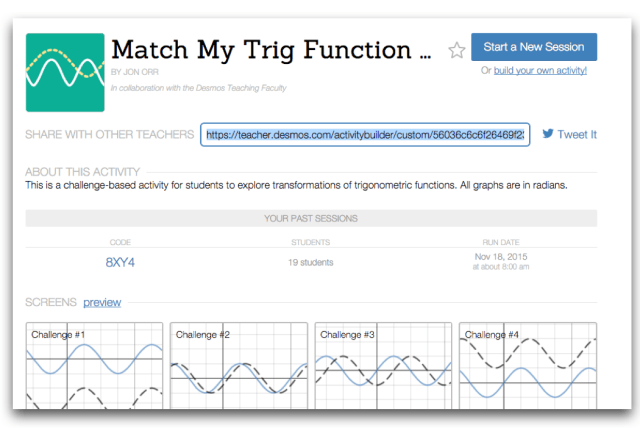Last May I shared my day-to-day planning spreadsheet for my grade 9 applied course. On that sheet I recorded the topic, tasks, and resources for each day of the semester. I used that as a resource for myself when teaching 1P through a spiral this semester. I found that having that sheet to go back too was super helpful and a time saver. This semester I followed that timeline except with a few tweaks here and there.
Since that sheet was so handy to have I made one similar for my MPM2D class. It was my first time spiralling that course and I wouldn’t go back to teaching through units again.
I heavily relied on Mary Bourassa’s blog….she is amazing. She shares her day-to-day plan as posts on her blog and also shares all of her resources and handouts. Thanks so much Mary!!!
Spiralling in Academic vs. Spiralling in Applied
I struggled initially with deciding to spiral the MPM2D course because of my experience with MFM1P. I had previously taught the 1P course through activities and 3 act math problems so it was a no brainer to just mix up the order of the problems and tasks. It was an easy transition since I had all the resources. For the 2D course though, it had been a while and I had not taught it with a task/activity approach.
What I found to work best in the academic class was to learn all new ideas/topics through activities and productive struggle with some direct instruction thrown in as a consolidation. Unlike the 1P course where I switched tasks/topics daily, I stuck to a topic/idea for a few days or a week in the 2D course. Once, for example, the class was comfortable with transformations of quadratics we would switch to trigonometry for a week, then analytic geometry for a week, etc.
I felt that through spiralling and teaching through productive struggle my students were better problem solvers. They were not just waiting to be told how to solve a problem. They were always actively thinking about which ideas they had learned could apply to solve a particular problem. That confidence I saw allowed us to go more deeply into the content than ever before. We just didn’t skim the surface of the processes, algorithms, and algebra needed, we solved problems!!
If you wanted to spiral the 2D course or a similar course I thought I would share out my plan to help out. Here is my day-to-day plan with links, resources, Desmos activities, 3 Act tasks, assignments, homework, etc from my spiralled MPM2D course. (It’s not fully complete for every day but you’ll get a sense of how the class ran).
[aio_button align=”center” animation=”none” color=”blue” size=”medium” icon=”star” text=”See the plan” relationship=”dofollow” url=”https://docs.google.com/spreadsheets/d/1O6xynI57e9iza6YTP9nEIu6DnbaEeL-KztV5js9xkwg/pubhtml?gid=0&single=true”]
Most files are either Smart Notebook, Apple’s Keynote, or PDF.
Get Apple’s Keynote on your Mac or on iOS.


























